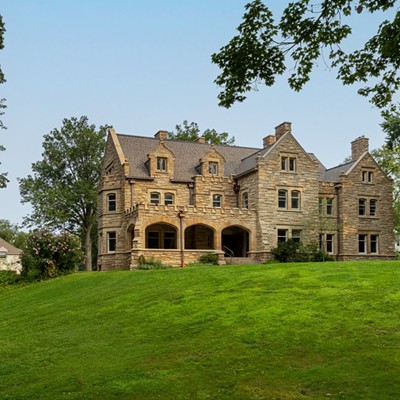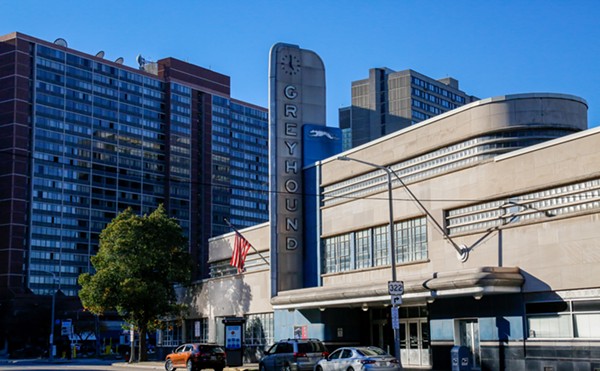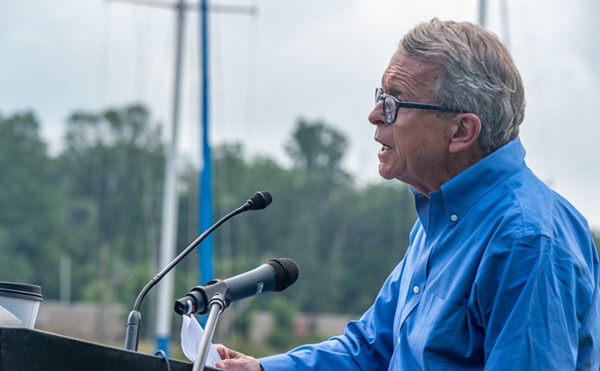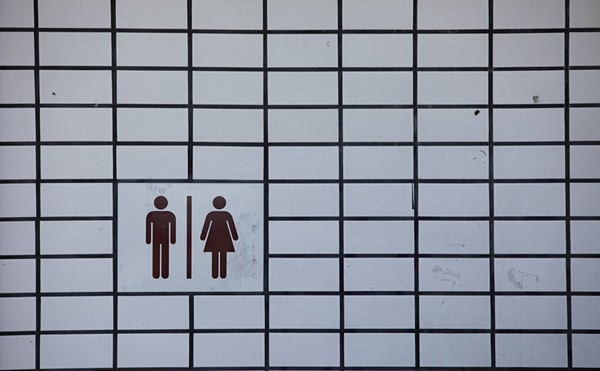With no train to fix, Midwest's membership started to drift away, from a high of around 200 to about half that. The group would sometimes recruit members at train shows, and eyes would inevitably light up whenever talk turned to the fabled 4070 — never mind that it hadn't so much as sounded its whistle in years.
One of the enamored was retired Mayfield Village firefighter Charley Sedgley.
"I was like 'You have a what?" recalls Sedgley, who signed on in 2005. "A real steam locomotive? Really?"
But his enthusiasm was short-lived. "We'd walk in here, and it was mental overload looking at everything that needed to be done. The people who were here then were well-meaning. They sat around and did a lot of talking about trains but didn't do any labor."
Zeyer, a handsome, salt-and-peppered model railroader and machinist in his forties, joined Midwest during a car show in 2008. "I live and work right near here," he says, "and when they showed me an architectural drawing of the roundhouse, I said, 'It's where? I've never seen it.'"
Meanwhile, Korpos, in the midst of his domestic upheaval, wandered into the place one weekend, presumably to keep himself out of a strip club.
"Steve came to an open house one day and said, 'I think I can turn this place around,'" Zeyer recalls with a wide smile. And with that, Midwest had hope once again.
After a couple years of observation, Zeyer, Korpos, and the newer members staged a coup. The old board was out and a new one in. President Zeyer appointed Korpos roundhouse supervisor — a commitment of three years of full-time, unpaid work, six days a week. Their lofty goals: get 4070 running before its 100th birthday in 2018, get the roundhouse in full working condition, develop the place as a "working railroad" museum, and restore Midwest to its heyday of running vintage train excursions.
In the 10 months since Zeyer and Korpos took over, things have changed already. They learned that the entire roundhouse was never condemned — just one gutted and shored-up section, which they figure can be restored with $250,000 they don't have. It houses repair bays that would provide more space for restoring locomotives and vintage cars, which can then be sold or leased. The most annoying revelation, though, was that the stalls where 4070 lives had never been condemned; volunteer crews could have been working on her all along.
But while there is much work to do, there are few men to do it.
"I operate on a zero budget," Korpos says with a laugh. "We need an influx of money and an influx of members: members who want to work, not just talk about trains. We got rid of those."
Welders, mechanics of any type, metal workers, pipe fitters, machinists, IT geeks, administrative help — anyone with an interest is welcome, as long as they're willing to sling a paint brush. No railroad experience is needed; the veterans are happy to teach.
Korpos is seizing every opportunity to make money. Alongside 4070 is a 1940s diesel locomotive that's being entirely rebuilt; once complete, it will be leased out to a steelyard or freight yard. A 1940s coach in mid-restoration has already been sold to the Stark County village of Hartville, where it will rest on the town square.
A bunch of cabooses sit in various states of disrepair out back, including an 1892 wooden model that's considered a tinderbox by modern rail regulations. But track-worthy or not, there's a lot of money in cabooses: Old ones can be picked up for a couple grand, then resold for at least $20K after restoration. A Westlake woman recently bought one as a surprise gift for her husband and had Midwest restore it.
"That's a good woman," Zeyer says.











